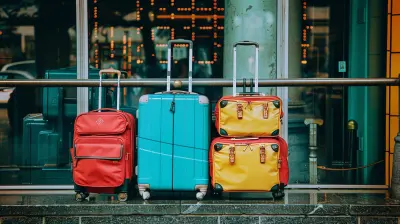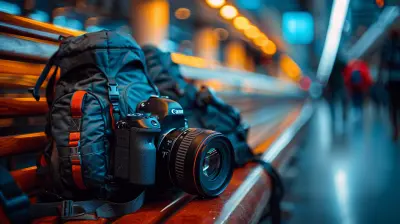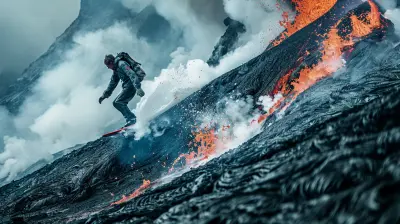Camel Trekking Through Mesmerizing Desert Dunes
2 July 2025
Imagine this: the sun dips low on the horizon, painting the sky with hues of orange and rose. A light breeze lifts tiny specks of sand. You’re not in a movie—you're on the back of a camel, swaying to the rhythm of its steps, surrounded by a sea of golden dunes. Sounds like a dream, right? That's camel trekking through mesmerizing desert dunes for you. It's not just a travel experience—it's a soul-stirring journey that awakens a part of you that you probably forgot existed.
In this article, we’re diving (or should I say trekking?) deep into the world of camel trekking. We'll talk about where to go, why it's worth it, what it's really like, and tips to make your desert adventure unforgettable.
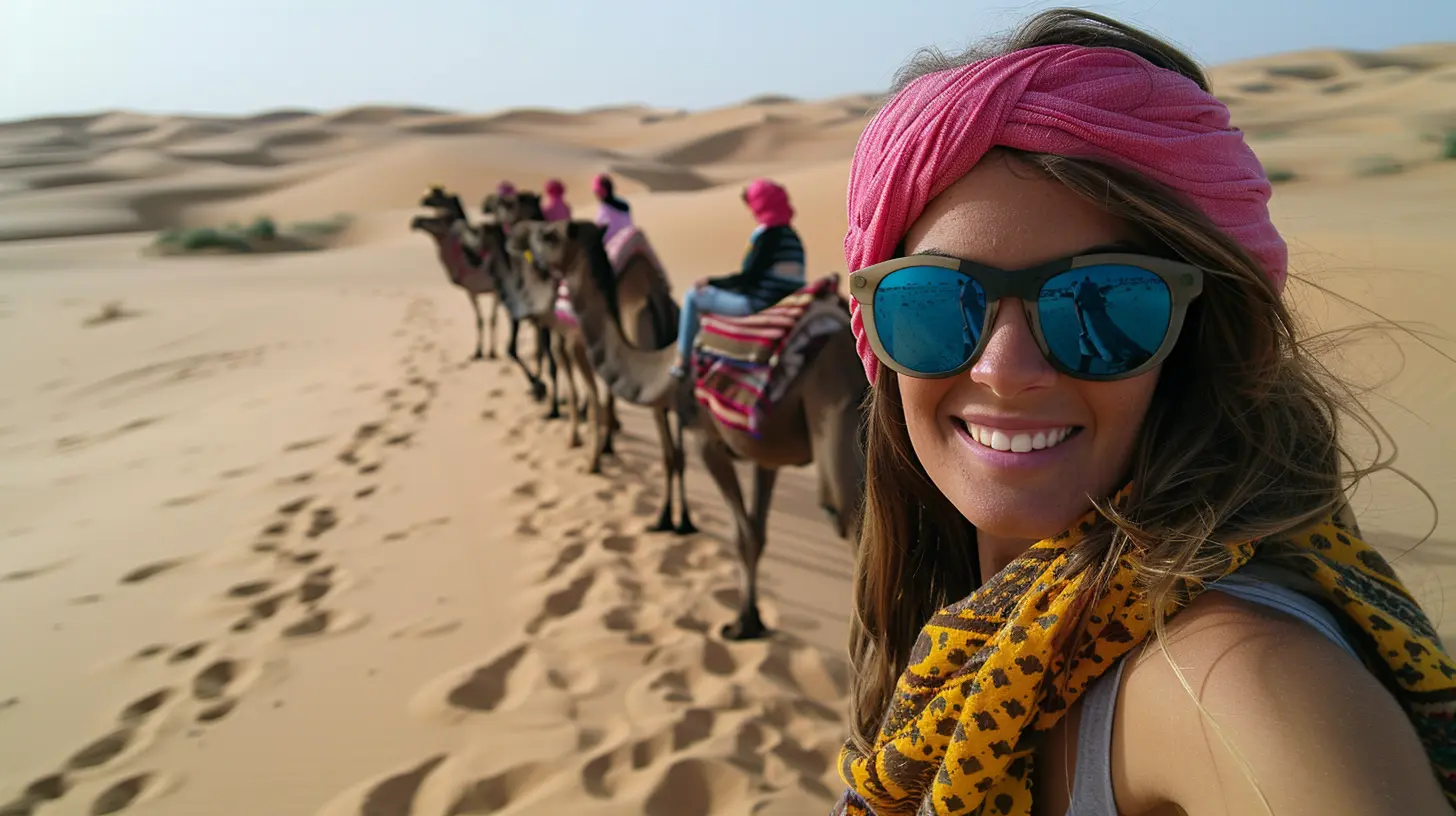
What Is Camel Trekking?
Camel trekking is exactly what it sounds like—riding camels through the desert. But it’s so much more than a means of transport. Think of it as the desert’s version of a road trip. You’re not rushing from one place to another; you're soaking in every moment, every grain of sand, every whisper of wind.It’s slow, yes. Sometimes even a bit bumpy. But that’s the charm. You’ll have time to listen, to look, and to feel. It’s meditative, even romantic. And for many, it's a life-changing escape from the noise of urban life.
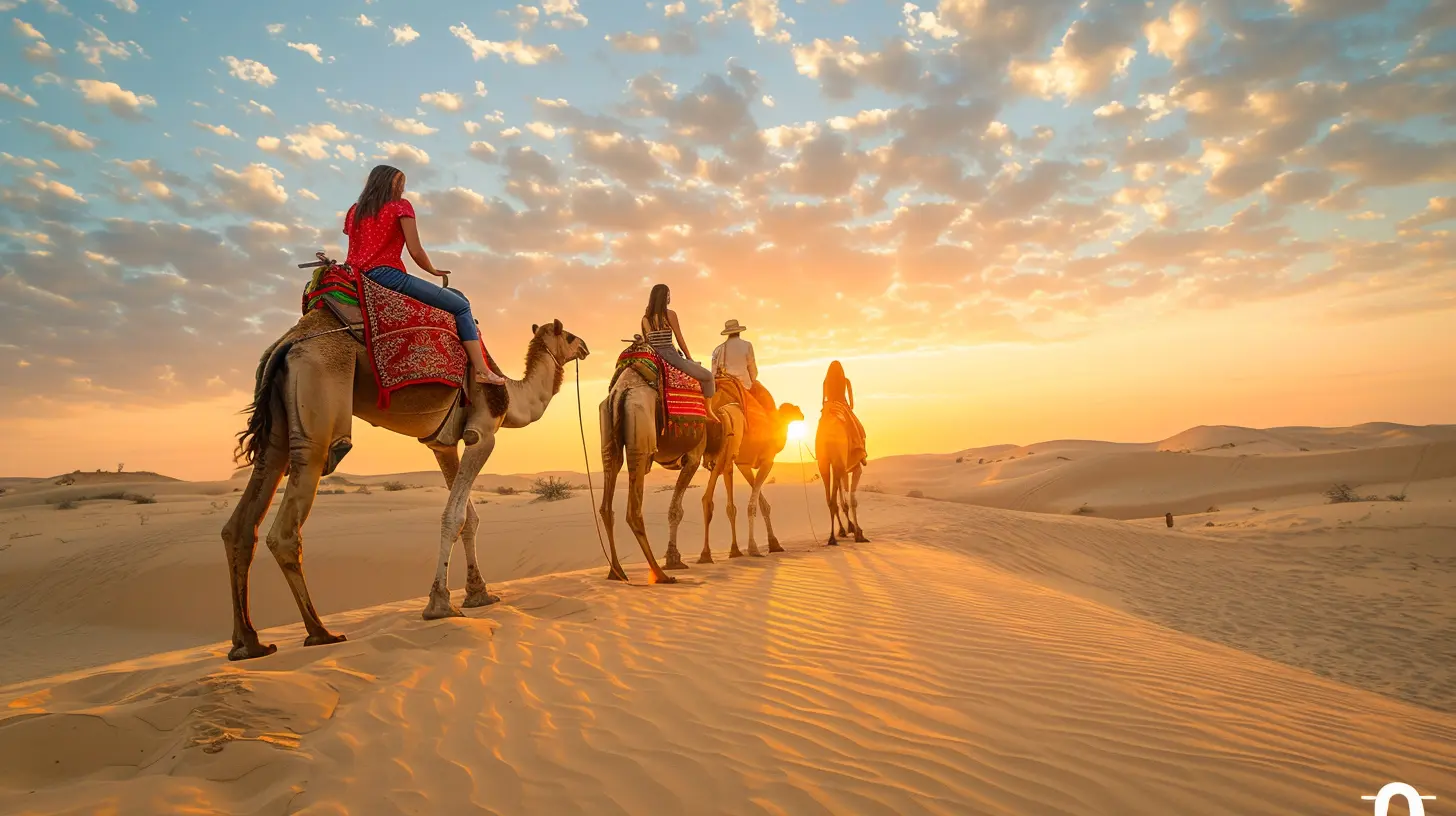
Why People Fall in Love With Camel Trekking
You might be wondering: "Why would anyone want to ride a camel across a desert? Isn’t it hot, dusty, and uncomfortable?"Well, yes. Sometimes it is. But also? It’s magical. Here’s why people absolutely love it:
1. Unmatched Scenery
The desert is strangely beautiful. The rolling dunes stretch endlessly in every direction, changing colors as the day moves on. Sunrise and sunset are pure poetry. Watching the sky bleed into the dunes is something that stays with you forever.2. Digital Detox
Let’s be honest—we’re all glued to our screens. In the desert, there’s often no Wi-Fi. No buzzing phones. It's just you, your thoughts, and Mother Nature. A few hours in and you’ll realize how much you needed this break.3. Cultural Connection
Most camel treks are led by local guides—often Tuaregs, Berbers, or Bedouins—who know the desert like the back of their hand. Traveling with them gives you a glimpse into their way of life: how they survive in the harshest of conditions, their stories, their music, and their food.4. Personal Challenge
Let’s be real: camel trekking can be tough. It gets hot. Camels aren’t exactly luxury seating. But overcoming that discomfort? It builds resilience. And there's something deeply satisfying about pushing through and coming out stronger.
The Best Destinations for Camel Trekking
Ready to go? Here are some of the top spots around the globe where you can experience camel trekking at its finest.🏜️ Morocco: The Sahara (Erg Chebbi & Erg Chigaga)
Morocco is hands-down one of the most popular spots for camel trekking. The Erg Chebbi and Erg Chigaga dunes are breathtaking—think giant waves of gold rolling into the horizon.Most treks start in Merzouga or M’Hamid and range from a couple of hours to multi-day adventures, including camping under the stars in traditional Berber tents.
🏜️ Egypt: Sinai and Western Desert
In Egypt, camel trekking is both a tourist activity and a cultural immersion. The Sinai Peninsula offers quieter, more spiritual treks, while the Western Desert is all about surreal landscapes—think black desert rocks, white chalk formations, and fossil beds.🏜️ Jordan: Wadi Rum
Welcome to Mars on Earth. Wadi Rum’s red sand and towering rock formations have starred in movies (like The Martian). The treks here tend to be shorter and more scenic, but the experience feels otherworldly.🏜️ India: Thar Desert, Rajasthan
In Rajasthan’s Thar Desert, camel safaris around Jaisalmer promise vibrant sunsets, forts that rise out of the sand, and spicy Indian dishes cooked over open flames. A night under the Rajasthani stars is pure magic.🏜️ Mongolia: The Gobi Desert
Want to go off the beaten path? Mongolia’s Gobi Desert is vast, remote, and filled with silence. Camel treks here are less commercial and more raw. You might not see a single soul for days, and that’s the point.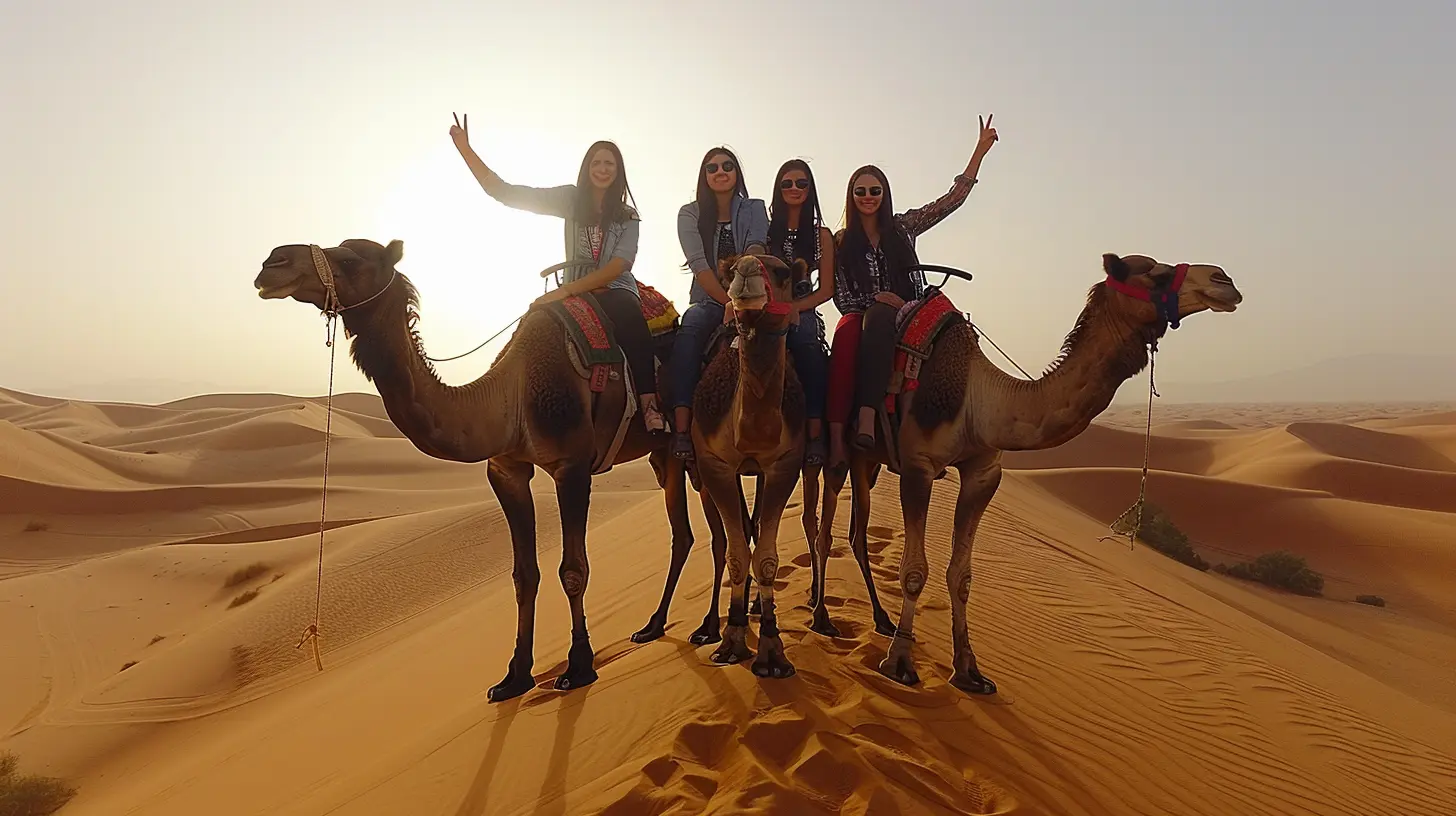
What To Expect On A Camel Trek
Let’s paint a real picture—this isn’t a cushy bus tour. It’s an adventure. So here's what you can expect:The Ride
Camels walk with a slow, rocking motion—it’s like being on a living boat. It might feel awkward at first, but your body adjusts. Most treks use dromedary camels (one hump), and don't worry—they’re surprisingly gentle creatures.The Camp Life
If you’re doing an overnight trek, you’ll likely camp in the desert. You’ll sit around a fire, have simple but flavorful meals (think tagine in Morocco or dal in India), and sleep under the stars or in tents. No five-star hotels here—but the million-star view more than makes up for it.Weather & Conditions
Deserts get super hot during the day and chilly at night. Dress in layers, wear a headscarf or hat, drink water like it’s your job, and use sunscreen like your life depends on it (it kinda does!).Tips For Making Your Trek Awesome
Want to make the most of your camel adventure? Here are some insider tips from seasoned desert wanderers:1. Pack Smart
Less is more in the desert. A small backpack with a change of clothes, a scarf (to protect from sun and sand), wet wipes, sunscreen, a flashlight, and snacks should do the trick.2. Hydrate, Hydrate, Hydrate
Desert air is dry as toast. Drink water even if you're not thirsty. Seriously—your body will thank you later.3. Be Flexible
Schedules in the desert are more like suggestions. Go with the flow. If your guide wants to stop for tea with a local family—say yes. These spontaneous moments are often the highlight.4. Bring a Good Camera or Phone Battery Backup
You're gonna want to capture the sunsets, the camel silhouettes, and the endless dunes. But battery life? Yeah, it disappears fast out there. Bring a solar charger or power bank.5. Respect Local Customs
Whether you're in Morocco, India, or Jordan, you're a guest in someone else’s home. Dress modestly, ask before taking pictures of people, and be kind. Good manners travel well.
The Emotional Side of Camel Trekking
This might sound cheesy, but desert treks aren’t just a physical journey—they can be emotional too. Something about the silence, the vastness, and the slow travel strips away distractions. You start thinking deeply, feeling more connected to the Earth, and maybe even facing parts of yourself you’ve been avoiding.People come back from camel treks changed. Calmer. More grounded. It's like therapy—only instead of a couch, you get a camel.
Is Camel Trekking Ethical?
Great question! As more people sign up for camel safaris, it's important to make sure the animals are treated well. Here's what to look for:- Are the camels healthy and well-fed?
- Do they have clean feet and no visible injuries?
- Is the saddle padded and not overloaded?
- Are the animals being whipped or yelled at?
Always choose tour operators who are transparent about their animal welfare standards. Don’t be afraid to ask questions or walk away if it doesn’t feel right.
Eco-friendly and ethical tourism isn’t a trend—it’s a responsibility. Let’s do it right.
Final Thoughts: Should You Do It?
If you're the kind of traveler who craves authentic, off-the-grid adventures—camel trekking through mesmerizing desert dunes is a must-try. It’s not about luxury or ticking off sights. It’s about connecting: to nature, to culture, and to yourself.Yeah, you might get sand in places sand shouldn’t go. You might wake up with a sore behind. But you’ll also collect memories you’ll be telling your grandkids about.
So, next time you're dreaming of an escape, consider trading Wi-Fi for starry skies, wheels for hooves, and chaos for calm. The dunes are calling.
all images in this post were generated using AI tools
Category:
Desert AdventuresAuthor:

Pierre McKinney
Discussion
rate this article
2 comments
Zoey McLoughlin
Embarking on a camel trek through the stunning desert dunes is a journey of wonder and serenity. Embrace the beauty of nature, connect with the timeless traditions of the landscape, and let the magic of the desert inspire your soul!
October 8, 2025 at 2:25 AM

Pierre McKinney
Thank you! I'm glad you resonate with the magic of camel trekking—it's truly a unique way to experience the beauty and serenity of the desert.
Soren Reynolds
Embrace adventure, create unforgettable memories!
July 9, 2025 at 3:21 PM

Pierre McKinney
Absolutely! Adventure in the desert truly leads to unforgettable experiences. Happy trekking!
